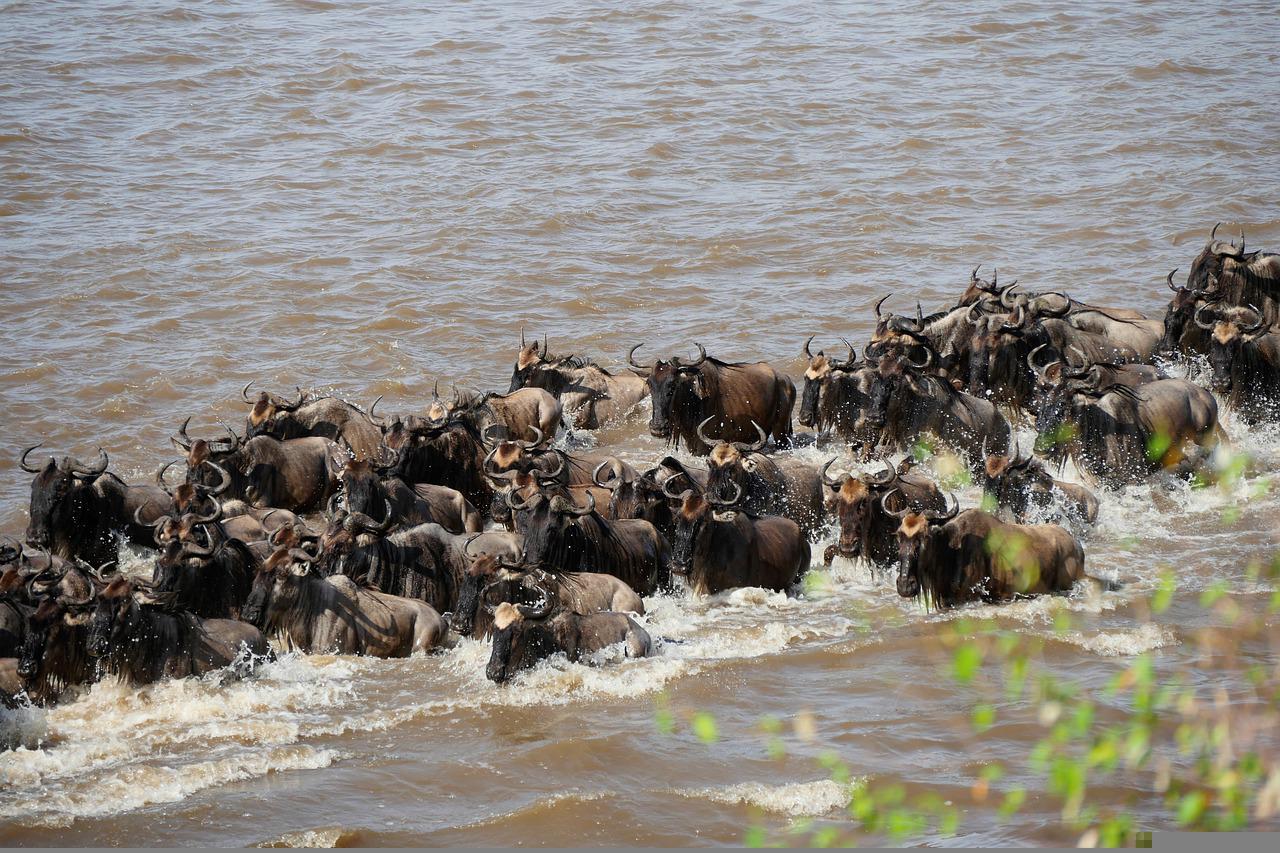The Masai Mara National Reserve, is the most famous wildlife conservation area in Kenya and perhaps in THE World. It forms part of the wider Mara ecosystem that stretches from the Serengeti National Park in Northern Tanzania. The reserve is home to the richest concentration of Wildlife including the Big Five, Zebras, Antelope, Gnus, Oribis, Hyena, Giraffes, Warthogs, Gazelles, Hartebeests, Hippos, Crocodiles and many others. The highest concentration of African Lions can be found in the Masai Mara including the black manned lion. The Reserve boosts of over 400 different species of birds. This makes the reserve one of the most sought after wildlife and birding safaris destination especially for first timers.
It is the other home to the world famous animal migration where over 1.5 million Wildebeest, Zebras and several species of Antelope make an annual circular tour between the Serengeti in Tanzania and Masai Mara in Kenya in search of greener pastures. The herds attract the attention of hungry predators – the hyenas and lions that prey on the lame and sick animals along the way. The months of July and August are the best times to witness what is truly the worls most spectacular animal migration and the dramatic sights that occur during the mass crossing of the swollen Mara river.
With well over 470 bird species recorded, the reserve is a fantastic place to enjoy bird watching. It features a number of habitats conducive to great bird watching. The savannah grasslands and the forested areas around the mara river are popular with many bird species and are the best spots for bird watching. You can enjoy a colourful view of birds such as; secretary birds, kori bustards, ground hornbills, crowned plovers, white stocks, crowned cranes, saddle billed storks, yellow billed storks, sacred ibis, goliath heron,grey heron, black headed heron, white egret, rufous-bellied heron, the endangered Madagascar squacco, giant king fisher, ross’s ruraco, vulture and many many more
Hot air ballooning is a major attraction in the Mara. It is great fun and gives you abirds eye view of the massive game reserve. The one and a half hours spent silently floating over the savannah will fill you with enough memories to last a lifetime. Cultural tours of traditional Maasai villages offer visitors a window into the rich culture and lifestyle of this famous tribe that has co-existed with wildlife for centuries.
The ecosystem of the Mara is mostly open Savannah (grassland) with patches of bush and woodland mainly acacia trees along the southeastern areas of the reserve. The reserve has a dump climate and more moderate temperatures than most of Kenya. Day time temperatures run at 30 degrees celcius maximum and night temperatures can drop to around 15 degrees celcius.

